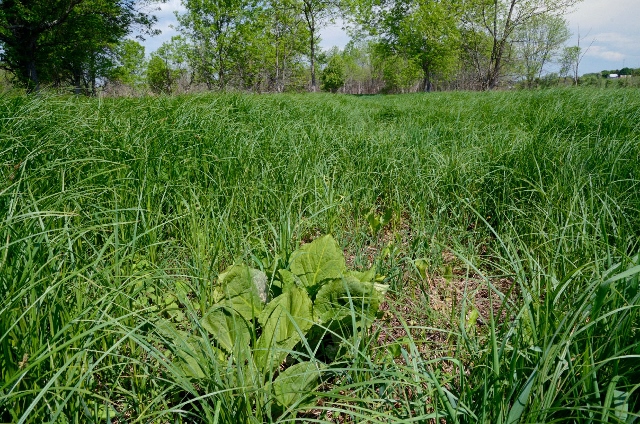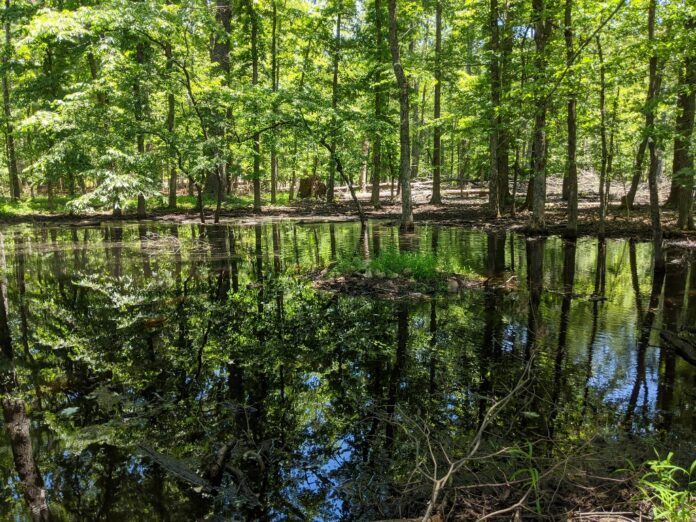Protection for rare sinkhole ponds, wetlands funded by damage settlement
More than 35 acres have recently been added to two Virginia natural area preserves in Augusta County as part of a long-term, multimillion-dollar effort to restore the South Fork Shenandoah River watershed contaminated by mercury decades ago.
The Virginia Department of Conservation and Recreation, which manages the state’s natural area preserve system, acquired 26 acres of forest adjacent to the Lyndhurst Ponds Natural Area Preserve.
The expansion, which brings the total acreage of the preserve to 376 acres, will make it easier for staff to manage the land with prescribed burns and invasive species control.
Lyndhurst Ponds, near the community of Lyndhurst, was dedicated in 2020 as a natural area preserve. It is home to globally rare Shenandoah Valley sinkhole ponds and rare plant and animal species. Among them are two rare plant species: the federally threatened Virginia sneezeweed (Helenium virginicum) and Valley Doll’s Eyes (Boltonia montana).
“This new addition will better enable DCR’s natural area stewards to manage the rare species habitats at Lyndhurst Ponds Natural Area Preserve, which will include restoring portions of the the preserve to the native grasslands and open woodlands of the historic Shenandoah Valley,” said Jason Bulluck, director of the Virginia Natural Heritage Program.
The former property owners, Waynesboro Nurseries and the Quillen family, were also critical to the establishment of the original natural area preserve.
“Waynesboro Nurseries and the Quillen family are delighted to contribute this additional acreage to the Lyndhurst Ponds Natural Area Preserve and protect more of this incredible natural habitat for future generations,” said Ed Quillen, president of Waynesboro Nurseries. “It was a wonderful opportunity to cooperate with DCR again and know that under their stewardship this legacy is in good hands.”

In September, the agency acquired a 9-acre parcel along the South River adjacent to the Cowbane Wet Prairie Natural Area Preserve. That brings the total acreage of that preserve to just over 156 acres.
The parcel includes floodplain habitat along the south bank of the river in one of the most important remaining segments in the watershed, and conserves a critical buffer between the river and a residential area. It supports habitat for two rare plants and a globally rare wetland type called Shenandoah Valley Prairie Fen. On the western slope of the Blue Ridge in the Shenandoah Valley, Cowbane Wet Prairie protects outstanding examples of wet prairies, mesic prairies and calcareous spring marshes which were once common natural communities in the Shenandoah Valley.
The funding source for the expansions at Lyndhurst Ponds and Cowbane Wet Prairie was the DuPont Natural Resource Damage Assessment and Restoration settlement.
When DuPont produced rayon in the 1930s and ’40s, its facility in Waynesboro, Virginia, released wastewater containing mercury into the South River. The contamination impacted more than 100 miles of river, associated floodplains and habitats for fish, migratory songbirds and other wildlife. To settle claims stemming from that damage, the company paid $42 million in 2017 for restoration projects. The Commonwealth of Virginia and the U.S. Fish and Wildlife Service are trustees of the settlement funds.


